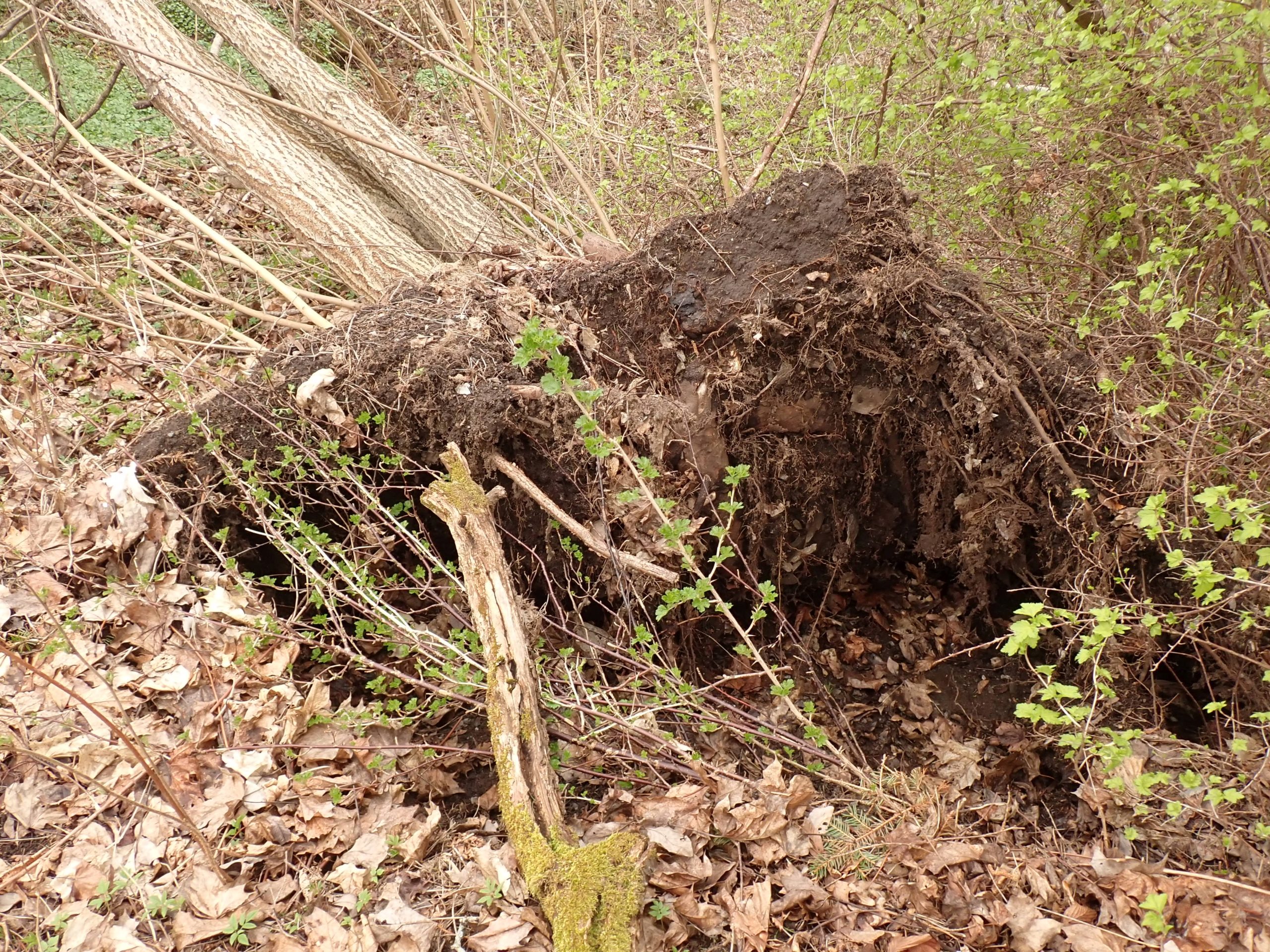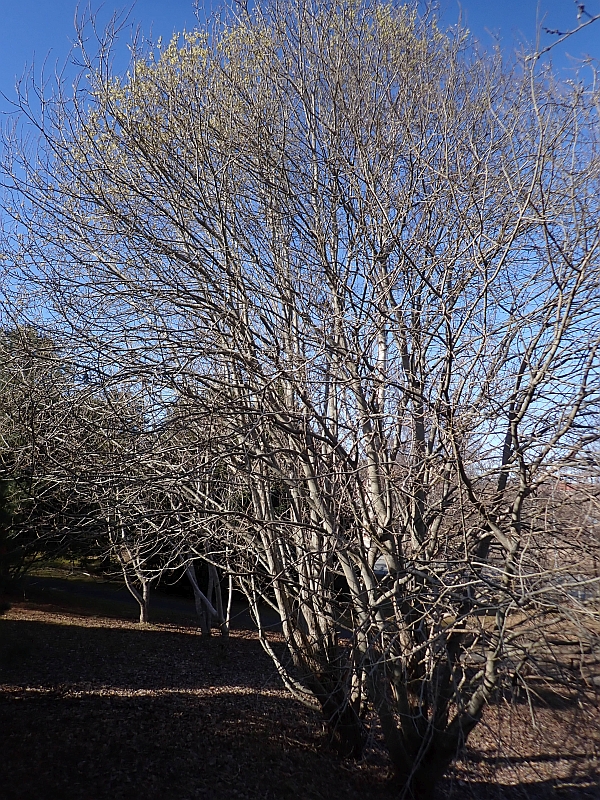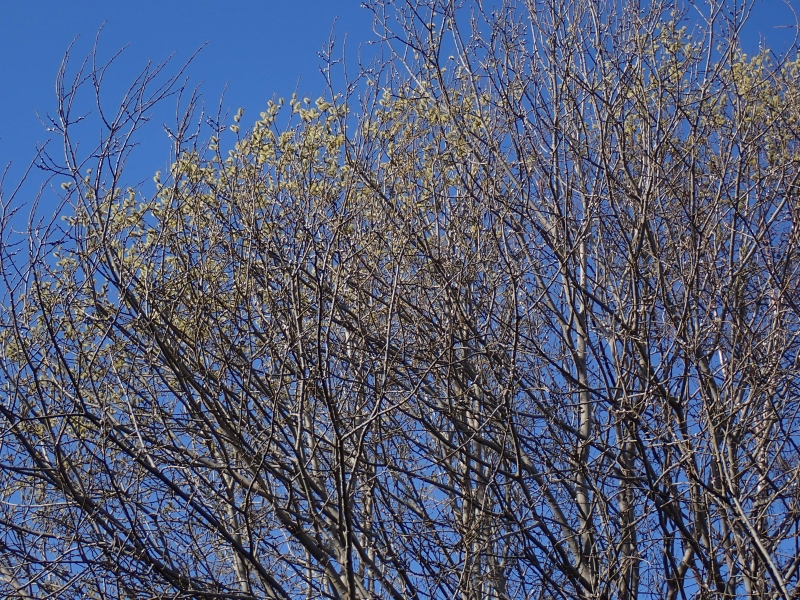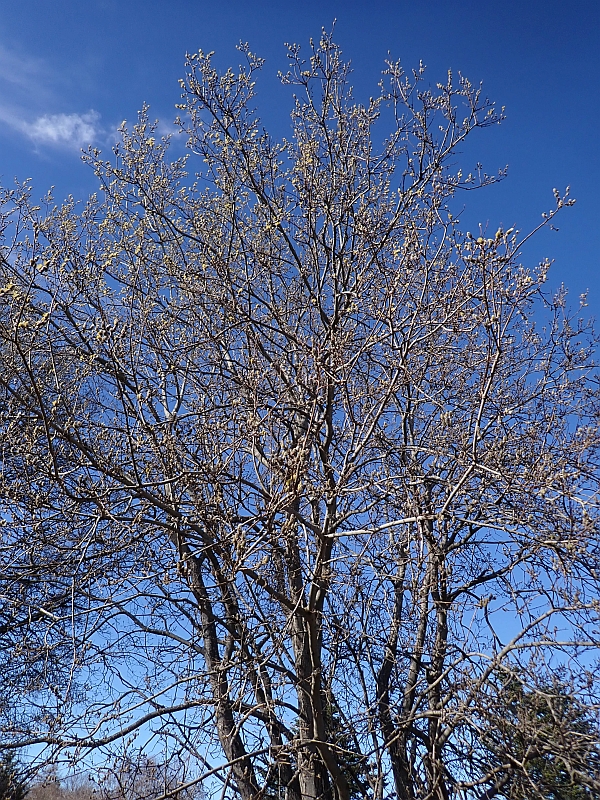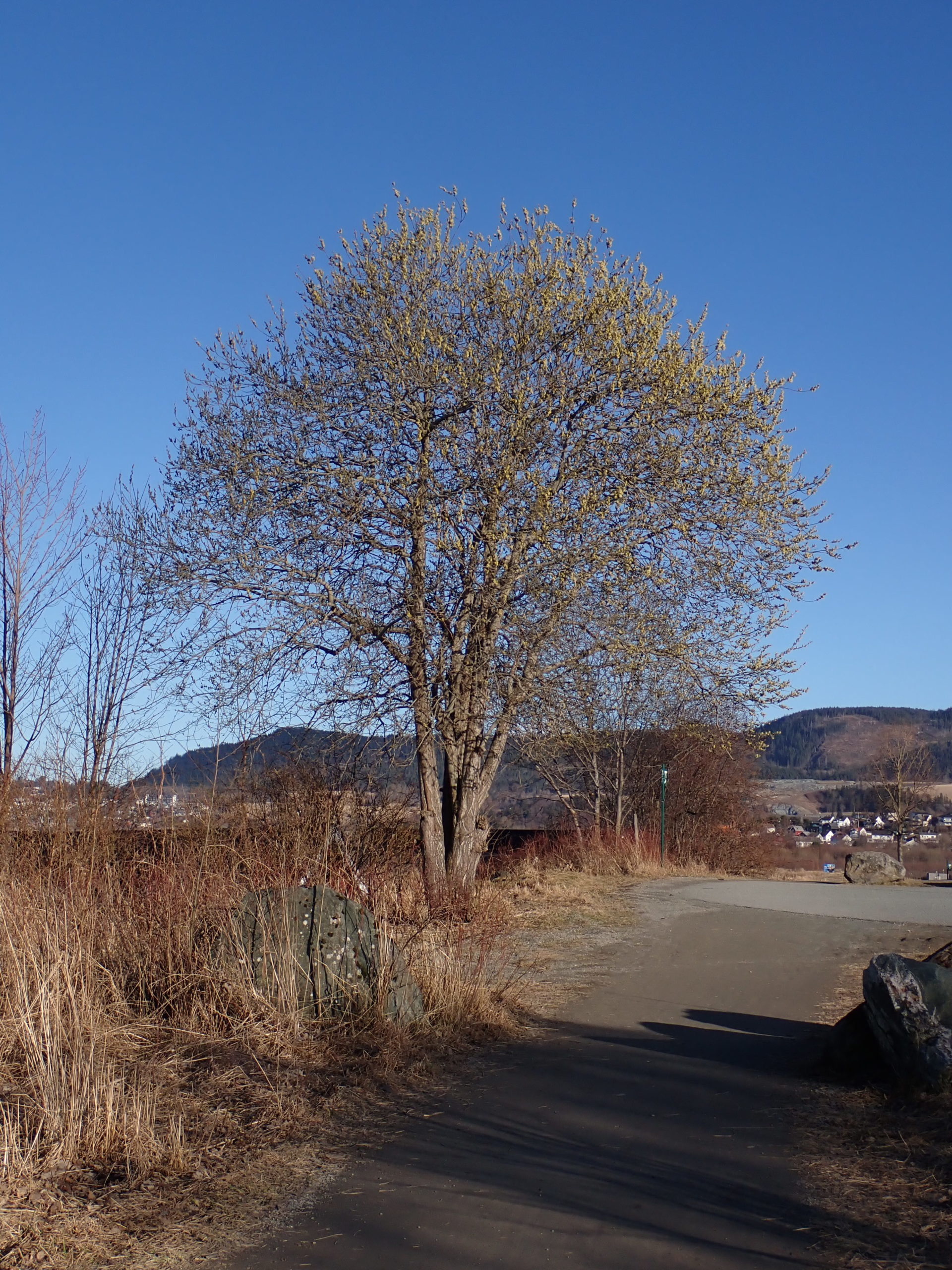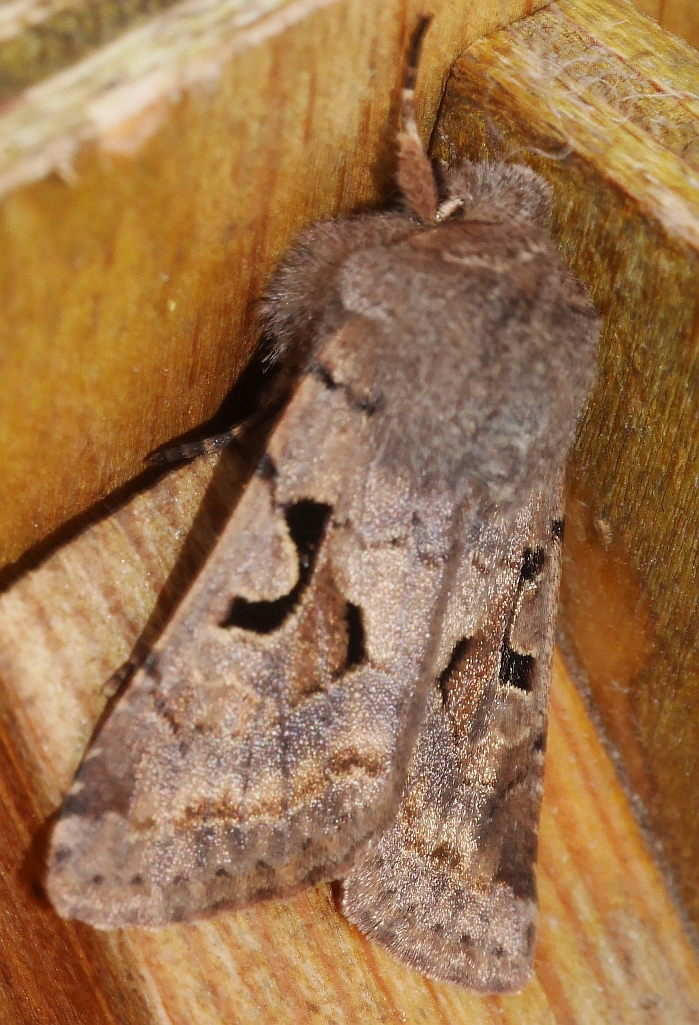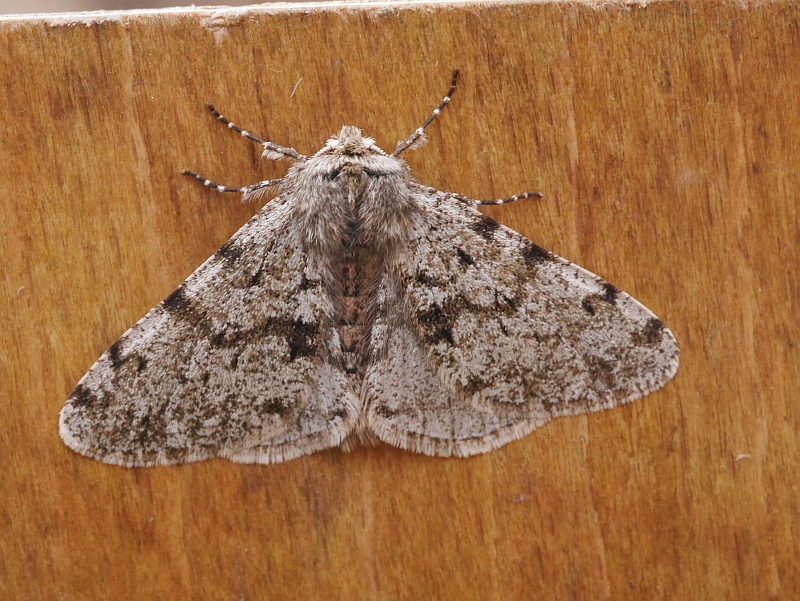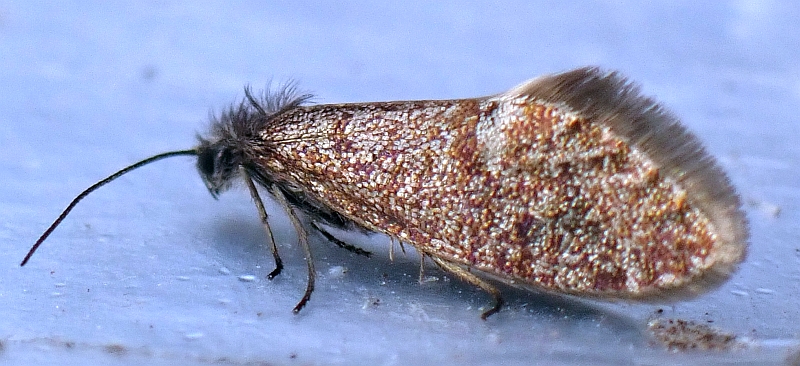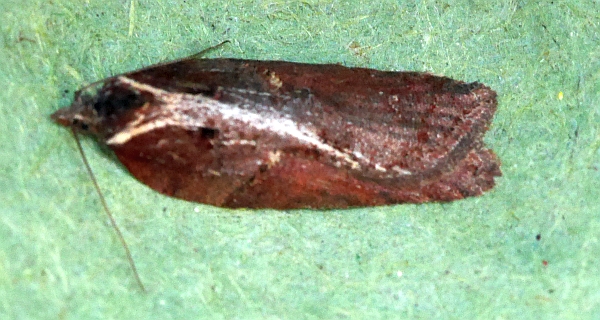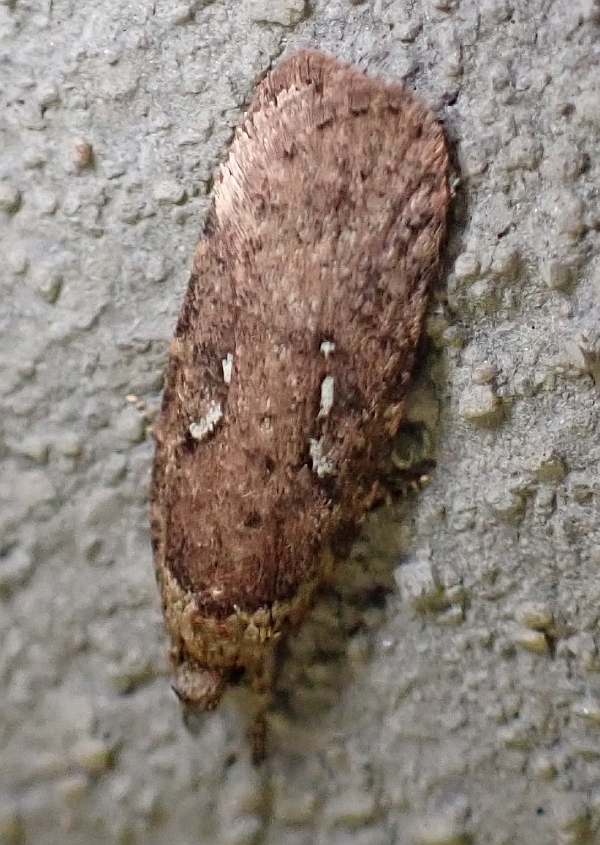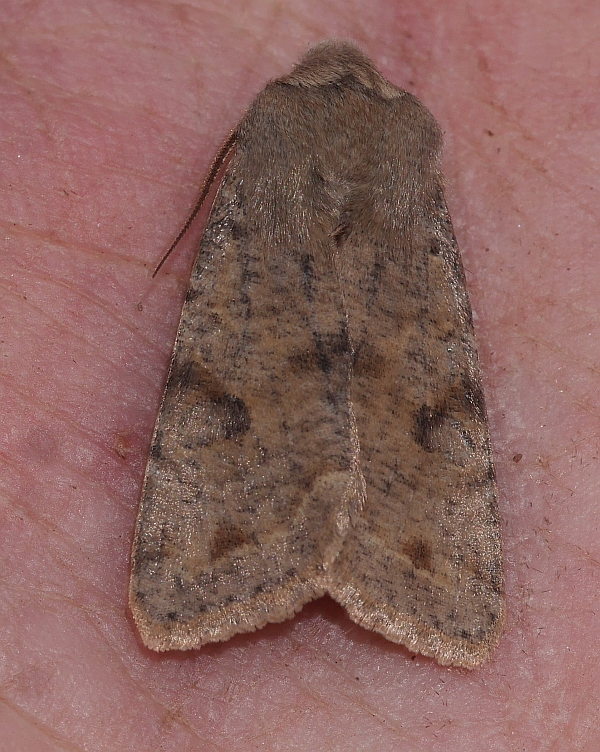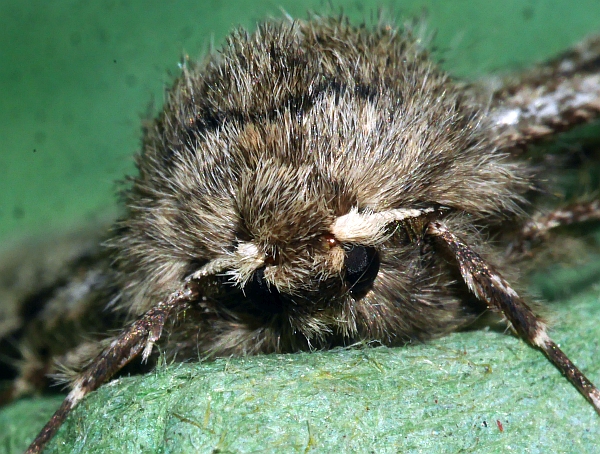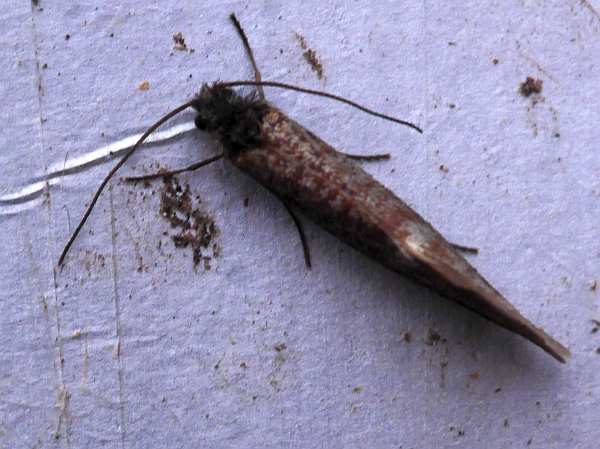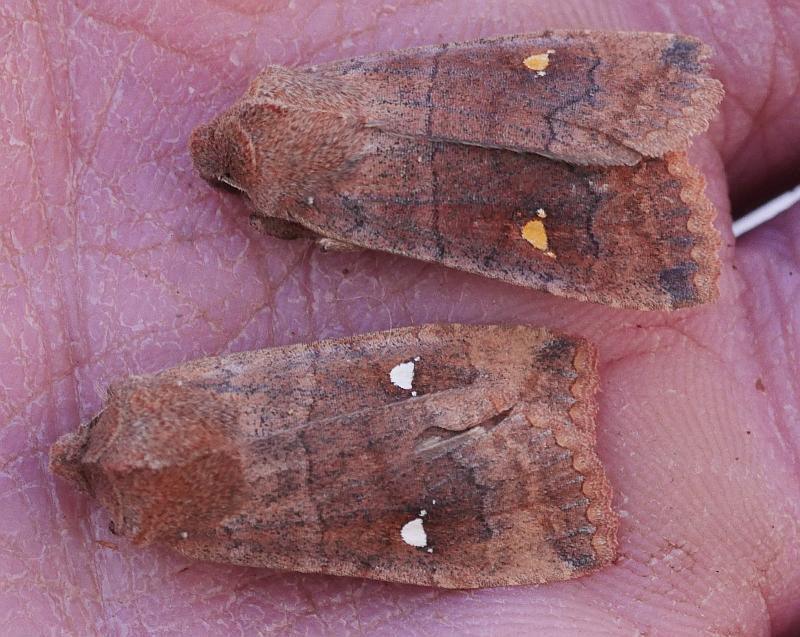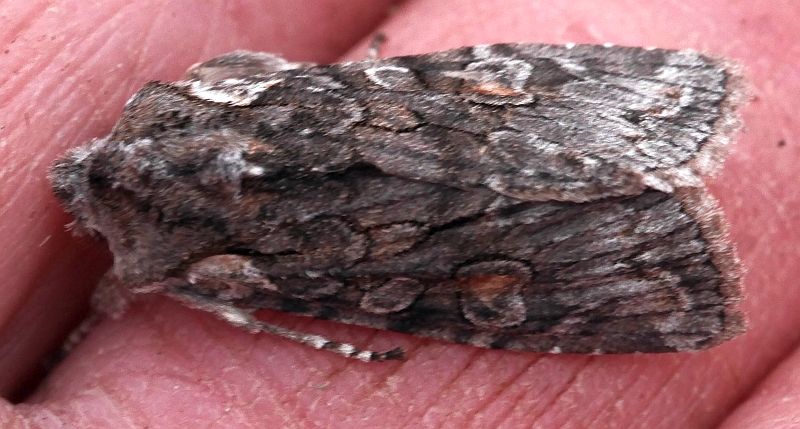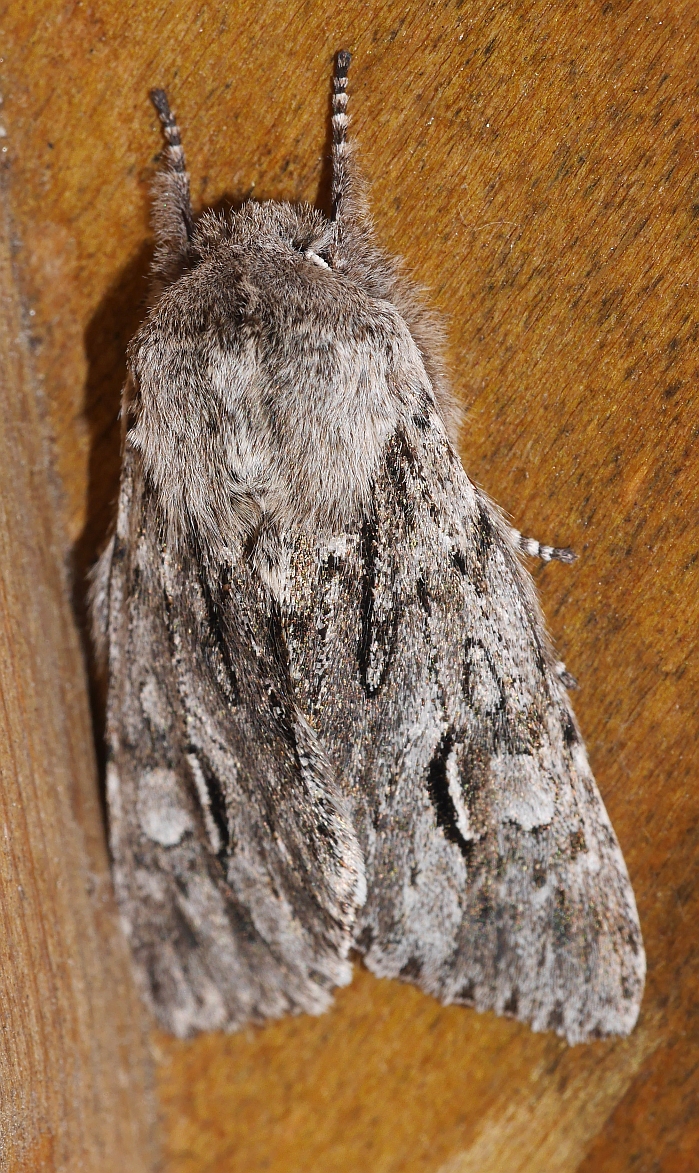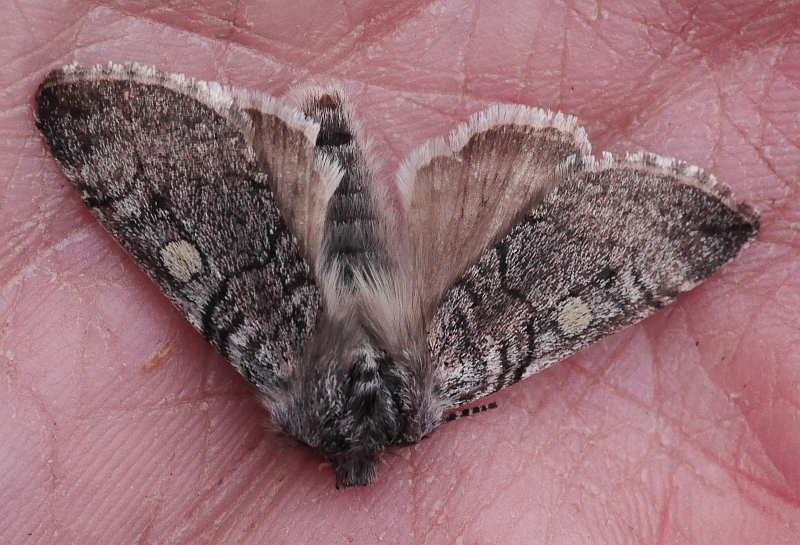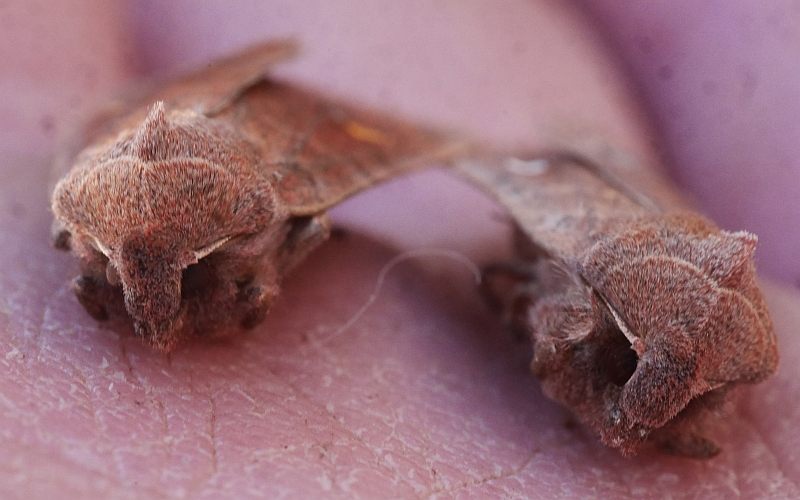During a powerful wind storm earlier in the year one of my oldest sallow / selje trees on the edge of the wild part of the garden was wind thrown and fell over the part of my garden most resembling a forest garden where my impressive 20-year old udo (Aralia cordata) is located. Luckily, it did no damage to my apple trees and the trunk is hanging horizontally over this area with part of the root still attached and what was the top of the tree now in full flower right next to the pathway down the garden. Salix caprea is dioecious with male and female flowers on separate trees. This one is female. I have over the years become more and more aware of the incredible importance of Salix caprea in providing food in early spring to a myriad of insects – wild bees, bumble bees, moths etc., all programmed to emerge at this time. In addition, it is host in Norway to 260 moth and butterfly species at the larval stage! This then leads to this tree being an important source of food to a range of birds and some like the chiffchaff (gransanger) are also programmed to return at sallow flowering time. During visits to my mum in Southern England in March / early April I visit other fallen sallows to look for interesting insects and I’ve noticed that they can continue flowering for several years after falling and resprout from the part of the root in the soil. So, although I was initially saddened bye the loss, this is just one of several large sallow trees in this part of the garden and now I have the top of a sallow at eye level right next to a path in the garden and can now study visiting insects closely. Just now, I saw an early bumblebee / markhumle (Bombus pratorum) feeding on the catkins. It’s also a perfect place to hang my moth trap (picture)!
Hence “A blessing in disguise” (Norwegian: hell i uhell).
See also https://www.edimentals.com/blog/?p=32035
Category Archives: Butterflies and moths
Insect Biodiversity in The Edible Garden
When Covid limited my travelling, I decided to spend my time investigating what other creatures I was sharing my “habitat” (edible forest garden) with. I knew quite a lot about the obvious things like butterflies and birds but little about, for example, insects. I set about in particular recording moths using a light trap and other techniques. That I recently registered my 300th species on my 2,200 sq.m. plot would never have occurred to me was possible when I started on this inward journey! My mind is blown away by the fact that growing food in a diverse forest garden like mine can contribute to such a large biodiversity and this only one relatively small but important part of the insect world present here. I’ve also registered many wild bees, bumble bees, hoverflies and others. Learning which larval food plants the moths are using has also taught me much, as has the important role of moths in pollination. After winter hibernation as adults or pupae, the incredible importance of Salix caprea (goat willow / sallow) in providing food in early spring has become even more important in my mind. The newly arrived insectivorous migratory birds attracted to the willow when they arrive here mid-April suddenly makes more sense as the migration of some species is naturally timed perfectly for the mass-emergence of willow-attracted insects!
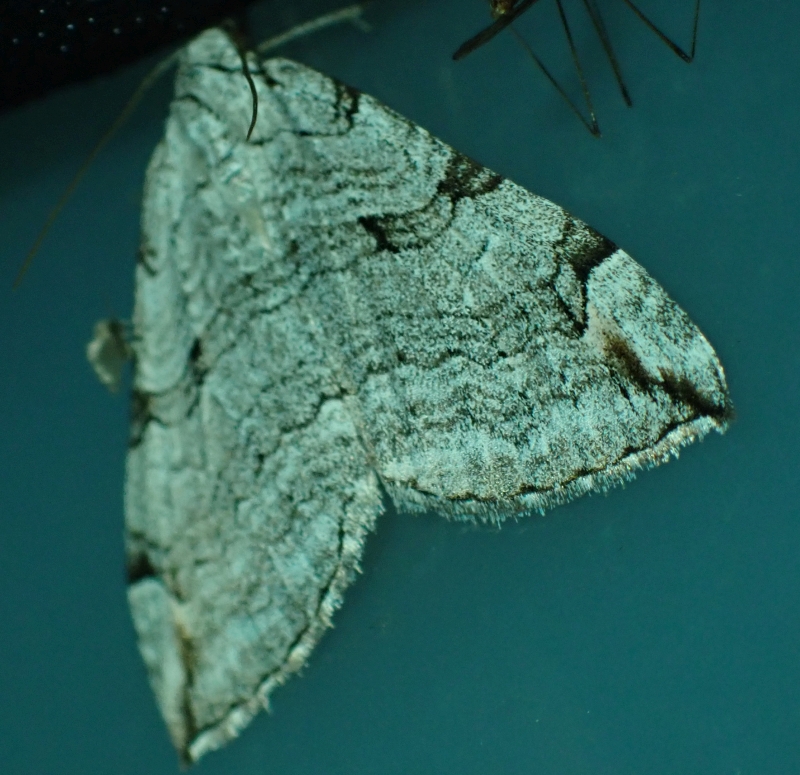
THIS THEN IS THE 300th MOTH SPECIES REGISTERED IN THE EDIBLE GARDEN AND ITS ANOTHER BEAUTY! This is the treble-bar moth / stor perikummåler (Aplocera plagiata). Its larvae are dependent on perforate st John’s-wort / prikkperikum (Hypericum perforatum) a species I’ve grown in the garden for years. It was also my 200th new species for Malvik municipality and 8 of the 300 were also new species for my county Trøndelag! So, 2/3 of the species I’ve recorded on my rocky edible hillside have actually never been recorded in my municipality, Malvik, before! Actually, only a little over 400 moths have been recorded in Malvik over the years!
See pictures of all 300 species on my blog post (link below). This is added to as new species are recorded! Many are equally as beautiful as the butterflies most off us love:
https://www.edimentals.com/blog/?p=27297
The least scarce moth is the Scarce Silver Y

Back from the UK and the first night I put out the moth trap on 15th / 16th August (they are released again) I was surprised to find that scarce silver Y moths / skogmetallfly (Syngrapha interrogationis) were everywhere and a count yielded 53 moths of this species. My previous highest count was 22 in August 2022, so I wondered how unusual this was. A quick check on our national species reporting database artsobservasjoner.no and it turns out this was the highest number ever recorded in Norway – next highest was 50 in 1997 in southern Norway and then 25 in Namsos, north of here. This is a moorland species and the larvae live on heather, bilberry and bog bilberry (røsslyng, blåbær og blokkebær) although a Swedish page mentions that they can also live on birch; see https://vilkenart.se/Art.aspx?Namn=Syngrapha%20interrogationis
This is a regular visitor in my garden in small numbers and both the high counts were made with the moth trap very close to a large Buddleja davidii in full flower. I haven’t yet seen them on the Buddleja, but I found at least one picture of this species on Buddleja, see https://www.lepidoptera.no/omrade/?a_id=1018865, so I guess this is what is attracting them as my garden is a few kilometres away from its moorland habitat, unless they have adopted birch in the garden. At the same time there are less than normal numbers of its cousin silver y (gammafly) and large yellow underwing (hagebåndfly) both of which frequent the Buddleja, sometimes in large numbers! Scarce silver Y is largely a night flyer as is large yellow underwing whereas silver Y flies both night and day!
At the same time there are less than normal numbers of its cousin silver y (gammafly) and large yellow underwing (hagebåndfly) both of which frequent the Buddleja, sometimes in large numbers! Scarce silver Y is largely a night flyer as is large yellow underwing whereas silver Y flies both night and day!
Poplar Hawk Moth / Ospesvermer
The last time I saw one of these in the garden was in 1998: poplar hawk moth / ospesvermer. Today, one turned up in my light trap, and I’m sure anyone passing would have heard a loud WOW coming from the woods! More information and a picture of the 1998 moth here.
It was reluctant to take to the wing and needed some encouragement as can be seen in the videos and you can pick it out flying off through the woods…

Early spring moths and sallow
The end of March this year was mild with little frost. I was surprised to find the first flowering sallow / selje (Salix caprea) on 19th March and by the end of the month some larger trees were in full flower providing much needed food for a myriad of insects include wild bees, bumble bees and most of the 13 moth species shown below, all of which were photographed in my garden at the end of March, attracted by a moth trap. In turn, birds are attracted to the insect feast and some also feed on the nectar directly.
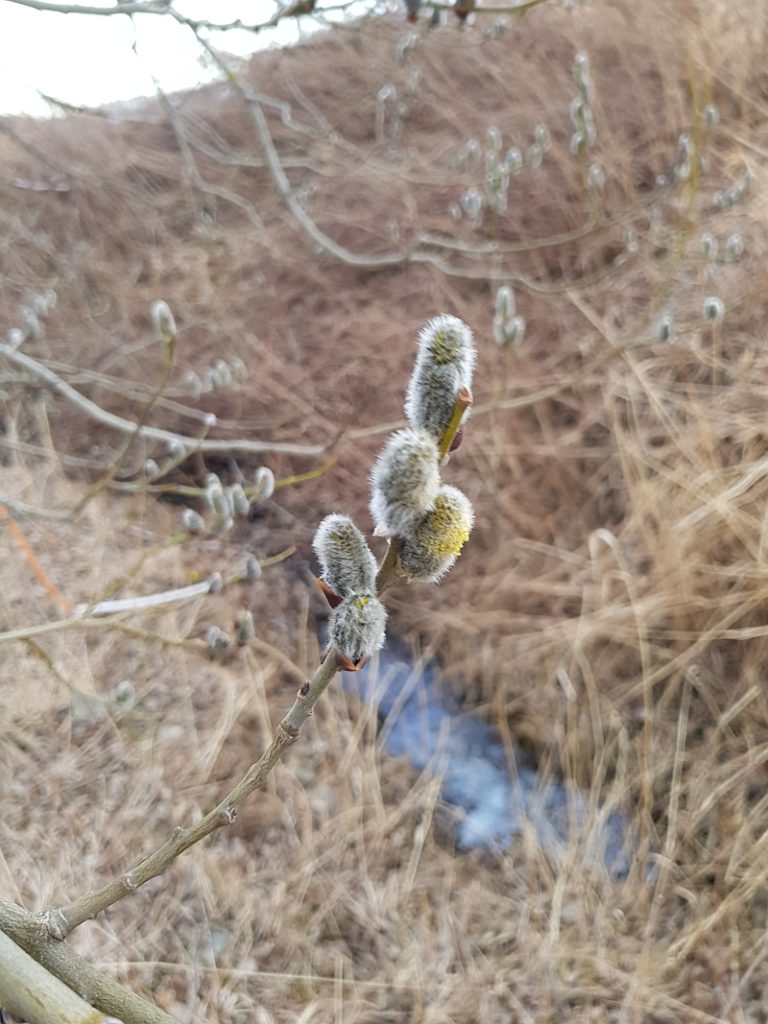
Largest numbers of red admirals
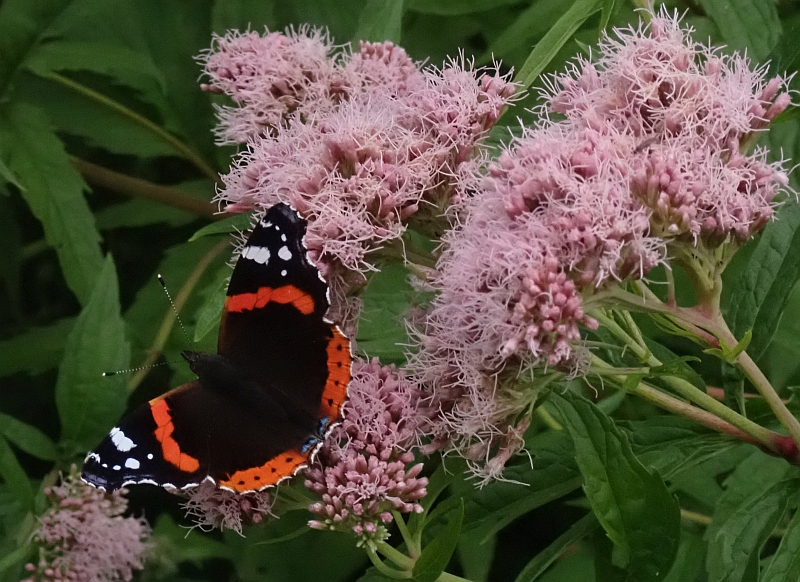 This morning, red admiral butterflies were everywhere in the garden and I counted at least 70 on both Buddleja davidii (butterfly bush / sommerfuglbusk) and Eupatorium cannabinum (hemp agrimony / hjortetrøst) was particularly densely covered!
This morning, red admiral butterflies were everywhere in the garden and I counted at least 70 on both Buddleja davidii (butterfly bush / sommerfuglbusk) and Eupatorium cannabinum (hemp agrimony / hjortetrøst) was particularly densely covered!
This is the second largest number of red admirals recorded in my county Trøndelag ever and the largest count this year in Norway (30 is the second largest)! Sadly, there are few other species around at the moment.
Fleet of Admirals
The numbers of red admiral butterflies have been building up over the last week and today with my large Buddleja davidii in full flower and warm summer weather, I counted at least 15 of the beauties, no doubt second generation butterflies from the influx we had earlier in the summer. I reported this earlier in our national web-based reporting system. To my surprise this was the largest number reported this year not only in the county but in the whole country! It seems to be a poor year for red admirals in the south of the country.
My Buddleja (butterfly bush / sommerfuglbusk) has become large despite cutting it back severely every winter. It was planted here under the balcony so that I could get a good view from above from a self-sowed plant from another bush in the garden in 2010.


Impaled moth?
Yesterday, I noticed a small micromoth flapping its wings vigorously on a spear thistle (veitistel) in the garden. It had somehow got caught on one of the spears as you can see in the video and pictures that follow. It’s probably the ground moss grey / barkmosemott (Eudonia truncicolella). Luckily for it,it shares its habitat with a compassionate and observant individual of Homo sapiens and was soon winging its way to its next destination! The larvae of this species feed on mosses!
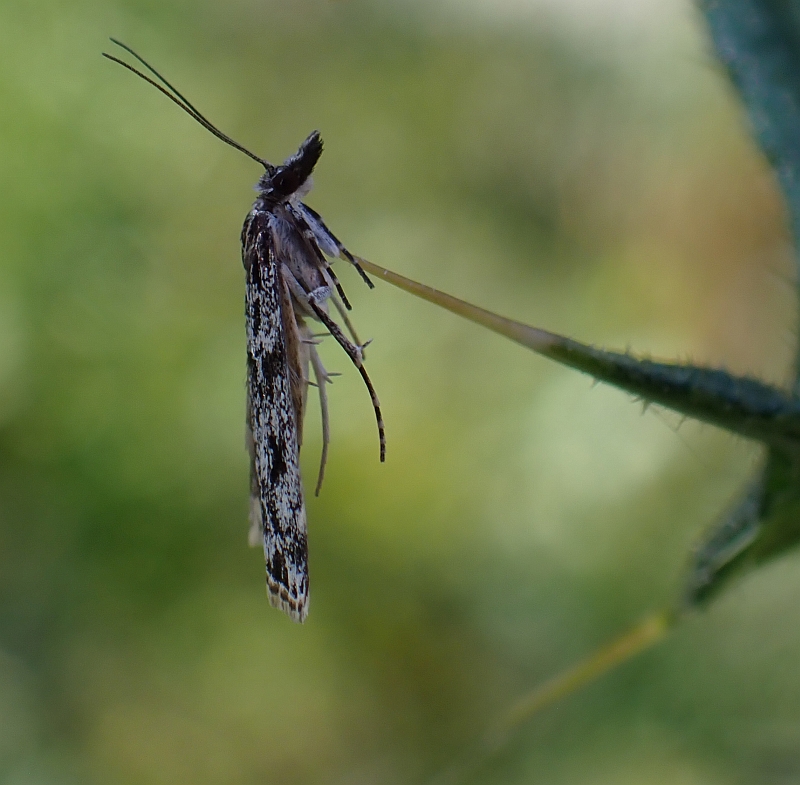
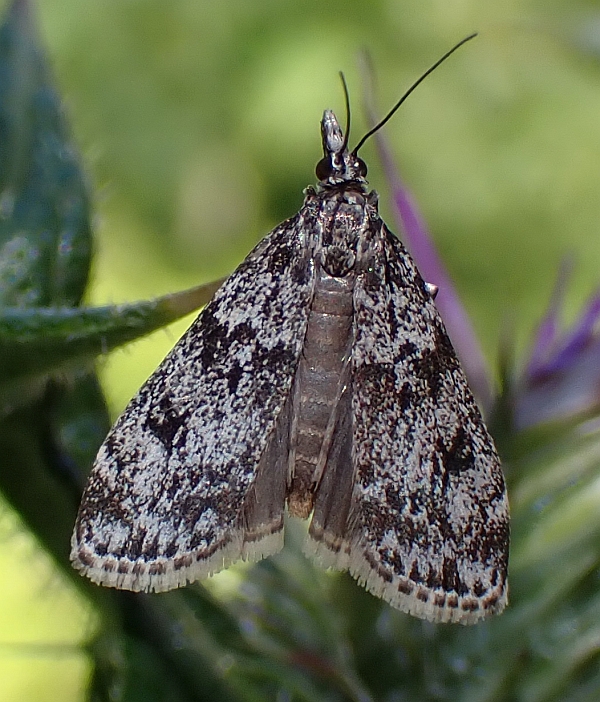
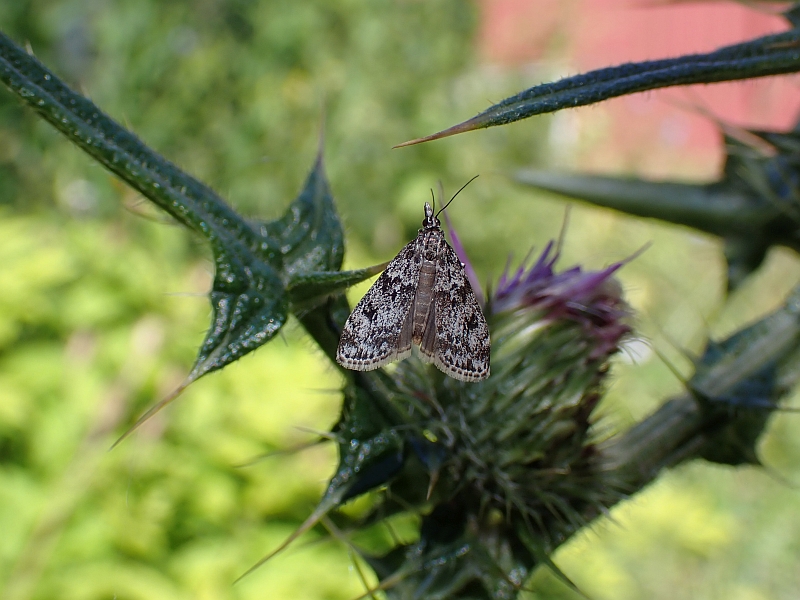
Don’t cut those nettles, share them with wildlife
We may know that some of are most spectacular butterflies like red admiral (admiral), painted lady (tistelsommerfugl), comma (hvit C), small tortoiseshell (neslesommerfugl) and peacock (dagpåfugløye) may lay their eggs on nettles (Urtica), but did you know that just here in Norway there are 51 species of moths that do the same and two of the most beautiful were in the garden this morning:
1. The burnished brass / mindre båndmetallfly (Diachrysia stenochrysis)
2. The small magpie / nesleengmott (Anania hortulata)
So, please keep a patch of nettles in the garden all summer (you can still eat the young shoots)…there are also several birds such as bullfinches (dompap) and finches such as brambling (bjørkefink) that eat the seed in winter!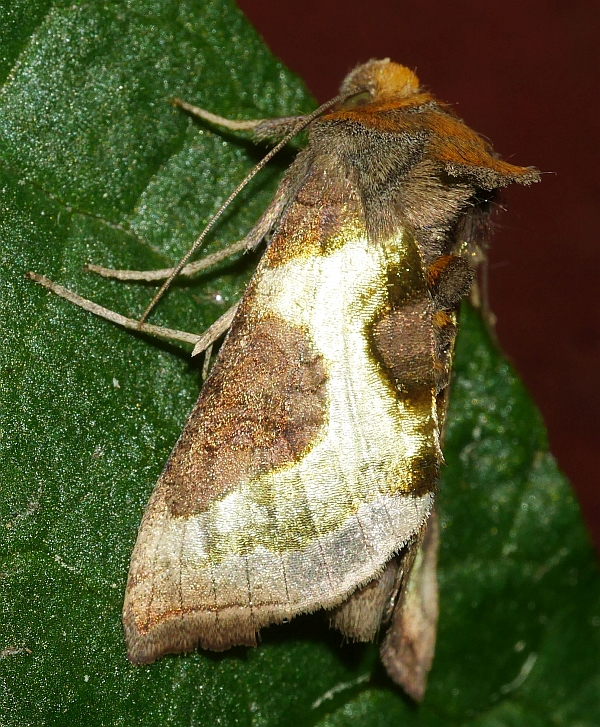

Chiffchaff and Willow
My interest in recording the incredible diversity of insects in my 40 year old edible forest garden lead to a much better understanding of the importance of different key species for the biological diversity present in the garden and the goat willow (selje) is perhaps the most important species of all despite the fact it is only a very marginal edible plant for us. I was aware of the importance of the nectar provided by willow to bumble bees and wild bees in the spring, but I was totally unaware earlier of the importance of this tree for moths emerging as adults in mid-April. I have so far recorded over 30 species of moth which are dependent on willow either in spring or in the larval stage (see the amazing diversity of the moths photographed in the garden in the picture at the bottom. However, this also explains the arrival of the chiffchaff (gransanger) and other migratory species in a wave in the middle of April here…arriving to a ready supply of insect food. The videos show our chiffchaff insect catching up amongst the catkins of one of the goat willows in the garden on 21st April, often singing as he hunts. Another fascination I’ve had for many years is the incredible complexity and beauty of bird song when slowed down (like a sound microscope; after hearing a BBC radio program about this and particularly the song of the wren: https://www.youtube.com/watch?v=S9x2rjExeW8). The second video is of the chiffchaff at normal and 10% speed as it hunts amongst willow catkins. The third video is also slowed down and shows a singing flycatching chiffchaff and a bumble bee flies past at the end (see at full screen)!









